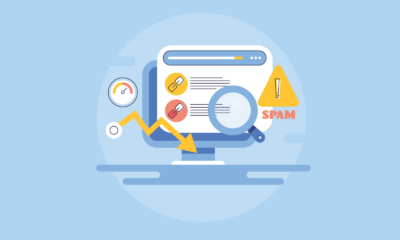MARKETING
How to Build a Marketplace Platform

To facilitate direct transactions between buyers and sellers, an online marketplace serves as an intermediary. Customers want a marketplace that can deliver cutting-edge security features for Fraud Detection, ensure transaction integrity for both parties, and give real-time monitoring of transactions in order to stay competitive.
So, let’s go into further depth about building a profitable marketplace website.
Let us now examine the many alternatives for the building of a marketplace business model. Of course, there is no one-size-fits-all solution to the question of how to develop a marketplace for all businesses.
Revenue of Etsy Inc. from 2012 to 2020 was 1.3bn USD. eBay’s annual net revenue from 2018 to 2020 was 10.3bn USD. The revenue of these marketplaces has become faster after COVID-19 pandemic.
So, the focus will be on speed to market, technical knowledge, development costs, scaling capabilities, and customization options. It’s likely that you’ll be able to determine which solution is best for your company.
1. Creating a new piece of software from scratch
Doing everything exactly as you had envisioned can be an option for you if you have the requisite skills or access to a team of professionals. In this case, the primary advantages come from having full access to the source code and not relying on any third-party software.
As per reports of Digital Commerce 360, 20% of buying managers spent on online marketplaces, and 22% spent more during the time of pandemic.
However, this method requires a significant investment of time at least three months since building a marketplace website capable of seamlessly processing all transactions is no small feat. This is a significant negative since it is sometimes necessary to construct an online marketplace website as quickly as feasible.
Developing and maintaining a platform on your own, while experimenting with bespoke features (which may or may not be helpful or popular), may quickly deplete your financial resources.
2. Creating it using open-source software
Using pre-existing software saves time over starting from scratch since the pre-existing functionality of marketplace software is complete, and it is easy to add new features. Because of this, it will be much less expensive to construct than the preceding choice.
It will take at least a month before you may launch again due to time constraints. The open-source software that is simple to alter is hard to come by; certain changes may need the involvement of developers.
Updating and maintaining the software might be a hassle as well. It’s up to your team to manage things like when a software developer doesn’t provide updates on the latest regulatory requirements for making payments.
3. Choose a website builder
There are a lot of options when it comes to basic website builders, and they’re all reasonably priced. Just have a look at Magento and Shopify as e-commerce platforms or Wix and WordPress as website-building tools.
Some of them even allow for extensive customization via the use of third-party extensions. So, if you’re comfortable with plugins and tools, going with a website builder can be the most cost-effective option for a business model for the marketplace.
When everything is said and done, though, it might take weeks to get everything just right for everyone. As a result, every plugin and extension must be tuned to meet or exceed the very high standards set by users.
There’s also a good possibility you won’t be able to locate a plugin that does what you want it to do at all. A plugin or extension that doesn’t work properly might cause havoc with your marketplace’s operations, therefore it’s best to avoid gambling your marketplace’s success on it.
4. Using a no-code marketplace builder
The easiest approach to building a platform is via the use of a SaaS or a marketplace-as-a-service technology. It’s possible that you’ll be online in as little as a day.
Your concept and the aspects that are crucial to your customers may be validated quickly by other firms using SaaS software. With this strategy, you obtain the greatest user experience for the least amount of money.
Last but not least, managing your web company and all of its facets does not need any programming knowledge on your part.
However, like with the previous method, there may be some restrictions on the number of features since software vendors prefer to deal with as many clients as feasible as possible. Because the features that are now accessible may not be sufficient for your firm to expand, this is a concern for scalability as well.
5. No-code toolset development
If you’ve mastered a wide range of no-code technologies, you may take on the building of marketplace sites. Foresee future upgrades and choose the proper components for today’s needs.
But even in this circumstance, it may take weeks to discover the right tools and learn how to use them. This technique is probably not for you if you have no idea what Webflow, Airtable, Parabola, and Jetboost imply.
It takes at least two weeks to learn how to use no-code tools, even for a seasoned no-coder. However, the platform might be unstable and need a lot of further development in the future.
6. Developing a SaaS product on top of an API-based marketplace
Instead of spending time on the fundamentals, you may concentrate on the features using this method. When compared to starting from scratch, this might save you a significant amount of money.
Unlike any other no-code tool, you may experiment with your ideas and combine other tools with them. Finally, if a software vendor is in charge of support, upgrades, and compliance, it is more trustworthy.
However, the fact that you’ll require development expertise or a team of professionals in this situation might be seen as a disadvantage. Using APIs to build a product is more expensive and more consuming than using a no-code solution.
Takeaway
The retail business is likely to be transformed by online marketplaces in the near future. 75 percent of marketing professionals say that the most essential advantage of marketplaces for organizations is the ability to contact consumers in areas where they like to purchase.
Online marketplace platforms may be built to stand even the most severe economic downturns with the correct marketplace development firm. Even if that’s a valid statement, markets serve a second purpose that’s just as important. In the event of a widespread coronavirus pandemic in 2020, a marketplace may be the only method to reach your target audience.
Source link



















You must be logged in to post a comment Login